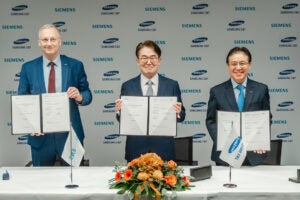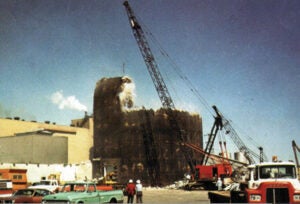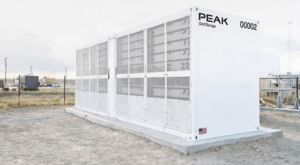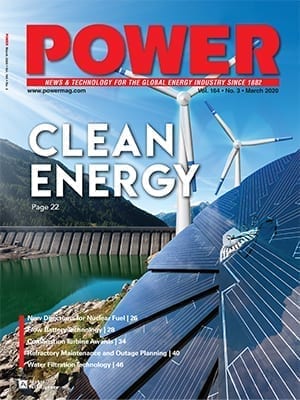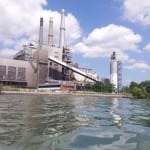
The U.S. Environmental Protection Agency (EPA) has moved to shift capital planning and permitting timelines for the nation’s remaining coal-fired power units, acting on two measures targeting wastewater discharge under the Clean Water Act, and separately, air-quality visibility programs and the Clean Air Act.
On Sept. 29, the EPA issued a proposed rule and companion direct final rule to extend seven compliance deadlines in its 2024 Steam Electric Power Generating Effluent Limitations Guidelines (ELGs). The agency proposed to push back zero-discharge requirements for flue-gas desulfurization (FGD) wastewater, bottom-ash transport water, and coal combustion residual (CCR) leachate from December 2029 to December 2034, suggesting the compliance deadline extensions “support affordable implementation of advanced treatment technologies,” the agency says in its proposed rule.
The EPA added that the move is necessary to support a looming surge in power demand. “In the last year, the EPA has observed extraordinary increases in energy demand across the U.S., decreases in energy reserves, difficulties in transmission across the electricity grid, and decreased energy reliability,” the agency said.
On the same day, the agency issued an Advance Notice of Proposed Rulemaking (ANPRM) under the Clean Air Act’s Regional Haze Rule (RHR), seeking public input on how to restructure implementation of the program that governs visibility protection in national parks, wilderness areas, and other federally designated Class I lands. While the ANPRM does not impose any new requirements, the EPA said it was seeking feedback on how it could “meaningfully” streamline and clarify the RHR, last revised in 2017, to reflect lessons learned from the second planning period (2018–2028) and to ensure the next phase (2028–2038) continues to meet the law’s goal of preventing and remedying visibility impairment from manmade air pollution in protected areas.
The measures were unveiled as EPA Administrator Lee Zeldin, Energy Secretary Christopher Wright, and Interior Secretary Doug Burgum published a high-profile Fox News opinion piece championing a renewed national push for coal. In it, the officials cast the wastewater and air-quality actions as part of President Trump’s “energy dominance” agenda, describing the extensions as a way to “bring back beautiful, clean coal,” prevent premature plant closures, and preserve reliable, affordable power amid surging electricity demand.
EPA Proposes, Fast-Tracks Effluent Rule Extensions Through Direct Final Action
Under the Clean Water Act, the EPA sets national technology-based wastewater discharge limits—effluent limitations guidelines (ELGs)—that are implemented through five-year National Pollutant Discharge Elimination System (NPDES) permits, which are typically issued by states. Steam electric ELGs govern how coal-fired power plants must treat large-volume process wastewater before discharge to waterways—rules the EPA has revised three times since 2015, most recently in 2024.
The EPA’s proposed “Effluent Limitations Guidelines and Standards for the Steam Electric Power Generating Point Source Category—Deadline Extensions,” published in the Federal Register on Oct. 2, extends seven compliance deadlines from the EPA’s April 2024 Steam Electric Power Generating ELG revisions.
The 2024 supplemental steam electric rule, which the Biden administration finalized in April 2024 as part of a four-rule environmental regulatory package, established zero-discharge effluent limitations for all pollutants in FGD wastewater and bottom ash transport water, along with numeric discharge limitations for mercury and arsenic in combustion residual leachate. The rule marked EPA’s most stringent wastewater discharge standards for coal-fired power plants to date, reversing Trump-era rollbacks and going beyond the Obama administration’s 2015 effluent guidelines by requiring zero discharge for FGD wastewater—a waste stream the earlier rule had not addressed as stringently.
Under the new proposal, specifically, the agency would extend by six years—through Dec. 31, 2031—the deadline to file a Notice of Planned Participation (NOPP) for the “permanent cessation of coal combustion” subcategory. A NOPP indicates a steam electric unit’s intent to permanently cease coal combustion by a specific date, and once filed and approved, the unit is exempt from zero-discharge requirements provided it follows annual progress reporting and completes retirement by the announced cessation date. However, the proposed rule would also move the zero-discharge deadlines for FGD wastewater, bottom ash transport water, and coal combustion residual leachate (CRL) to Dec. 31, 2034. In addition, it seeks to align the pretreatment (PSES) timelines for indirect dischargers (plants that send wastewater to a municipal treatment plant) so those three zero-discharge dates match the direct-discharger schedule in 2034.
The EPA says the changes are meant to “support affordable implementation of advanced treatment technologies,” while keeping the 2024 discharge limits intact. The proposal, notably, does not reopen the 2024 Best Available Technology (BAT) determinations or the zero-discharge limits. Essentially, it seeks to adjust timing and mechanics by updating the transfer provisions so facilities can switch between compliance alternatives.
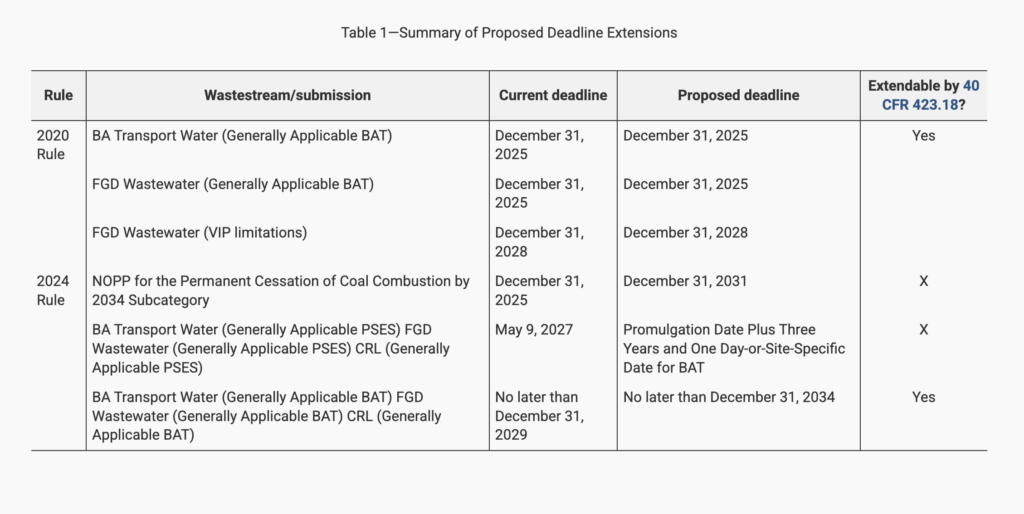
The EPA also published a companion direct final rule, a procedural mechanism that allows the agency to expedite adoption if no significant adverse comments are received. Under this approach, the direct final rule would automatically take effect 60 days after publication—unless the EPA withdraws it in response to public objections—while the proposed rule provides the fallback pathway for a traditional rulemaking if comments are filed. According to the agency, the dual filing will serve “to promptly provide regulatory certainty to affected facilities” and maintain alignment between wastewater compliance schedules and the next NPDES permit cycle.
EPA Opens Door to Future Technology Review and Data Solicitation
As notably, in its proposed rule, the EPA indicated that the current deadline-extension effort could serve as a foundation for a broader follow-on rulemaking to reassess portions of the April 2024 steam-electric ELGs—particularly the mercury and arsenic limitations for unmanaged CRL and the associated technology bases. The agency is soliciting detailed, unredacted information from utilities, engineering firms, and technology vendors on the availability, performance, and economic achievability of existing and emerging wastewater-treatment systems.
The agency specifically invited pilot- and full-scale performance data on thermal evaporation, crystallization, and membrane-filtration systems, including influent and effluent chemistry, run times, and maintenance experience. It also requested information on “value-in-pretreatment” (VIP) approaches and any cases where systems failed to perform as described in the 2024 rule record. That data will help it evaluate the real-world feasibility of these technologies for potential inclusion in a future update to the steam-electric guidelines, the agency said.
The EPA also acknowledged industry claims that current zero-discharge systems for FGD wastewater and CRL may not be universally available or economically achievable, noting that some plants achieving those limits operate under unique site or climatic conditions. Seeking to better understand constraints, the agency asked for engineering cost estimates, firm bids, vendor quotes, and other detailed cost information, as well as analyses of how wastewater-compliance costs intersect with electricity-reliability and resource-adequacy considerations.
The data request is expected to inform EPA’s forthcoming reconsideration of Best Available Technology (BAT) determinations and its evaluation of whether alternative or hybrid systems could achieve comparable pollutant removal at lower cost or with improved operational reliability.
Proposal Responds to Changing Conditions, Reliability Concerns
If finalized, the proposed measures will apply to steam electric power generating facilities, particularly coal-fired units classified under NAICS codes 22111 and 221112. The EPA has estimated that roughly 500 plants are subject to the Steam Electric ELGs, and almost all of them are coal-fired. About 75 facilities were projected to bear additional costs under the 2024 revisions.
“The ELGs for the Steam Electric Power Generating category apply to power plants that burn coal to create steam and generate electricity,” the EPA explains. “These power plants use large volumes of water in their operation and maintenance. Their wastewater is treated before it is returned to the environment to reduce pollutants including selenium, mercury, arsenic, bromide, chloride, iodide, nitrogen, and phosphorus.”
According to the agency, the compliance deadline extensions respond to petitions from the Edison Electric Institute, a trade group representing U.S. investor-owned utilities, the Utility Water Act Group, a coalition of major electric utilities and power producers, and coal industry group, America’s Power, which cited ongoing engineering and procurement bottlenecks, transmission constraints, and concerns about overlapping retrofit timelines. In their submissions, the groups cautioned that overlapping compliance timelines across several EPA programs—including wastewater, coal combustion residuals, and air regulations—could create implementation and planning conflicts that strain facility resources. The revised deadlines are intended to allow operators to plan pollution controls “in a manner consistent with maintaining system reliability and resource adequacy, the agency noted.
The EPA also acknowledged that some power plants will need additional time to decide whether to use the compliance pathway for electric generating units (EGUs) that plan to permanently cease coal combustion or convert to alternative fuels by Dec. 31, 2034. Under the April 2024 ELG rule, units looking at permanent retirement were required to submit a NOPP by Dec. 31, 2025 to qualify for the “permanent cessation of coal combustion” subcategory—which carries less-stringent discharge limits consistent with the 2020 rule. The EPA’s new proposal would extend the NOPP deadline to Dec. 31, 2031, which it said would prevent “unreasonable” early-retirement decisions and allow operators to evaluate reliability, market, and planning factors before committing to closure.
“At the time of the 2024 rule, the EPA estimated there were ‘around 50’ EGUs whose retirement dates had been announced between 2030 and 2034,” the proposed rule notes. “While the flexibilities in the new permanent cessation of coal combustion subcategory were also applicable to retirements prior to 2030 (especially with regard to [coal combustion residual leachate]), these post-2030 retirements would have been subject to the full suite of zero-discharge limitations but for the subcategory,” it adds. “Utilities and trade associations have extensively communicated to the Agency that facilities need additional time to decide about ceasing coal combustion in light of surging electricity demand, especially in areas where data centers may be constructed in the near future.”
Additional time would “support affordable implementation of advanced treatment technologies” and projected that the extension could yield up to $200 million in annualized electricity cost savings once finalized, the agency said. However, the EPA also linked the proposal to “extraordinary increases in energy demand across the U.S., decreases in energy reserves, difficulties in transmission across the electricity grid, and decreased energy reliability. Surging industrial and data-center load growth has prompted a need to retain dispatchable generation during periods of tight reserve margins, it suggests.
EPA: Warranted Measures In Light of a ‘National Energy Crisis’
The EPA’s concerns about reliability, while outside its statutory mission to safeguard public health and maintain environmental quality, appears to be rooted in its coordination under the December 2024 EPA–DOE Memorandum of Understanding on Electric Reliability. The agency in its proposal referenced findings from the North American Electric Reliability Corp. (NERC) 2024 Long-Term Reliability Assessment, which identified data centers and manufacturing expansions as key drivers of new resource-adequacy challenges.
The proposed rule’s fact sheet, meanwhile, describes the current power landscape as a “national energy crisis,” citing higher electricity bills, transmission congestion, and blackout risks. It also points to a series of emergency reliability interventions this year, including DOE orders to keep Michigan’s J.H. Campbell and Pennsylvania’s Eddystone plants online, a FERC-approved reliability-must-run contract for Maryland’s Brandon Shores facility, and Georgia Power’s decision to extend operations at Plant Bowen beyond 2034. The EPA also referenced a June 2025 heat wave that caused blackouts, and measures to install mobile generation in San Antonio to underscore what it called “extraordinary increases in energy demand” across multiple regions.
EPA is accepting public comments through Nov. 3, with submissions directed to Docket ID EPA-HQ-OW-2009-0819 via regulations.gov. After the 30-day comment period closes, the agency will determine whether to finalize the direct final rule or withdraw it and proceed under the parallel proposed rule if significant adverse comments are received.
For affected utilities, the outcome could shape the timing of NPDES permit renewals and any related wastewater-treatment capital projects, the EPA acknowledged. The agency specifically advised facilities to coordinate with state permitting authorities to ensure permit schedules remain consistent with any new compliance dates once finalized.
However, it also noted the rulemaking intersects with ongoing litigation in Southwestern Electric Power Co. v. EPA (No. 24-2123), a case consolidating various petitions challenging the April 2024 rule. In that case, the Eighth Circuit Court of Appeals on Aug. 27 granted the agency’s request to hold challenges to the April 2024 ELG rule in abeyance pending publication of the deadline-extension action. The EPA suggested that utilities monitor both the docket outcome and subsequent court actions, given that these proceedings could influence the timing and scope of any future revisions to the underlying BAT requirements.
—Sonal Patel is a POWER senior editor (@sonalcpatel, @POWERmagazine).



